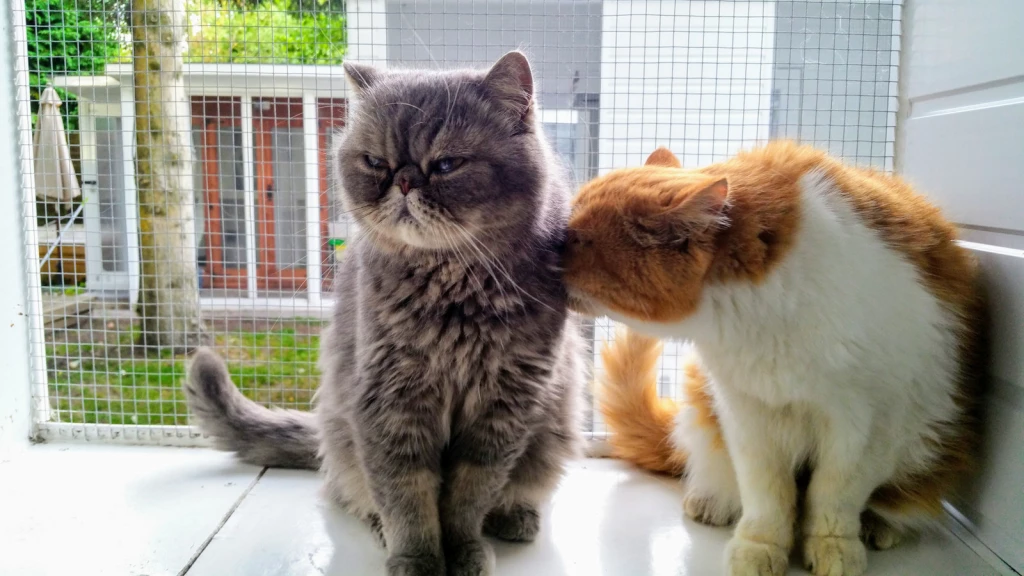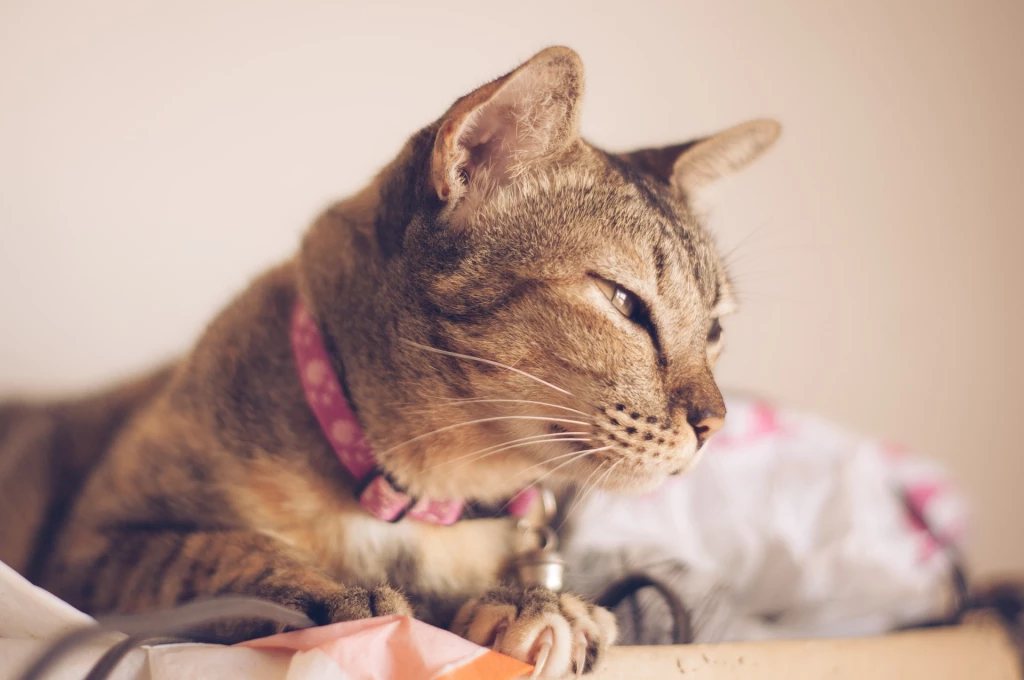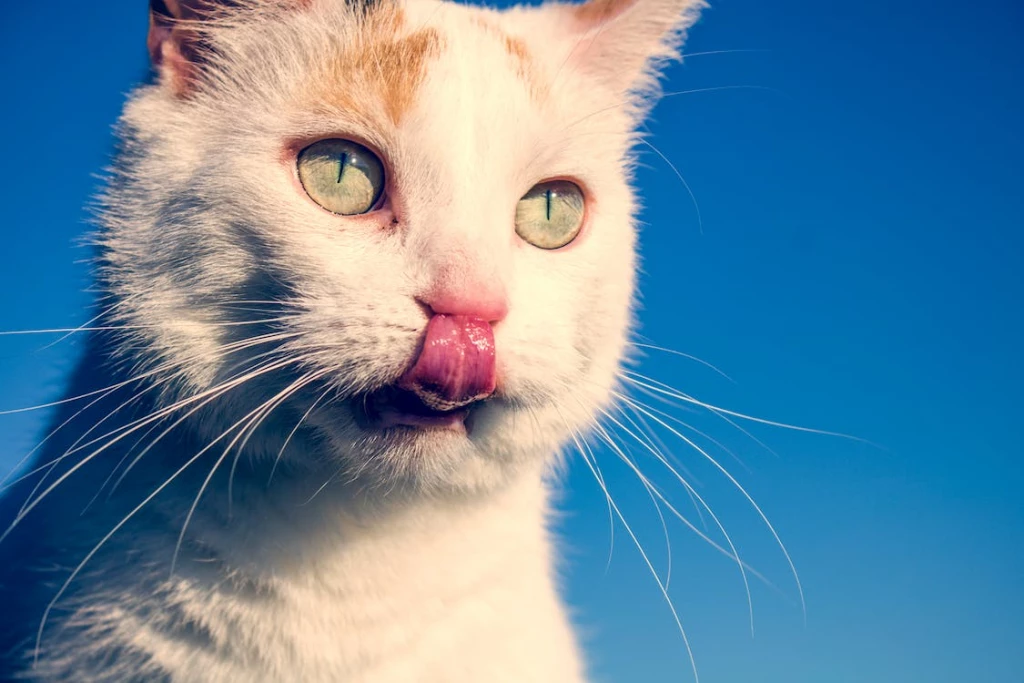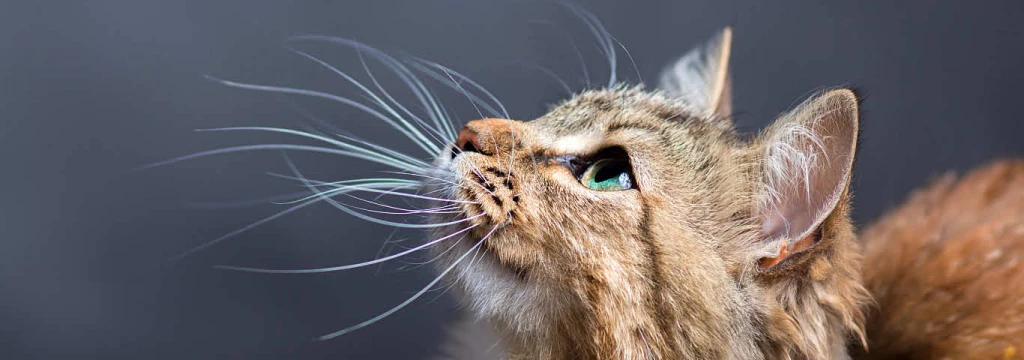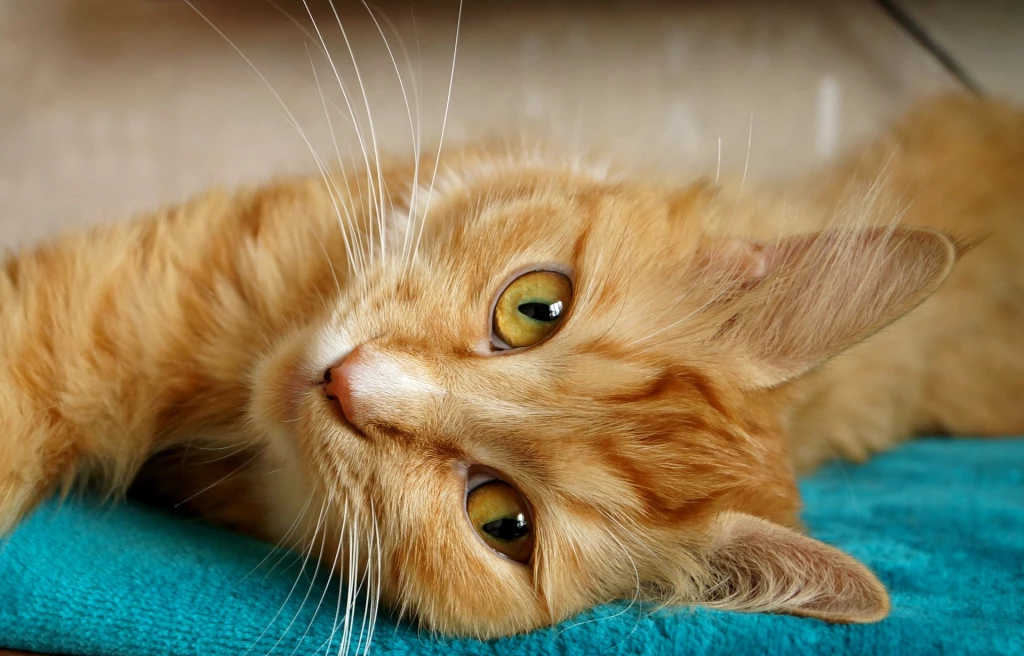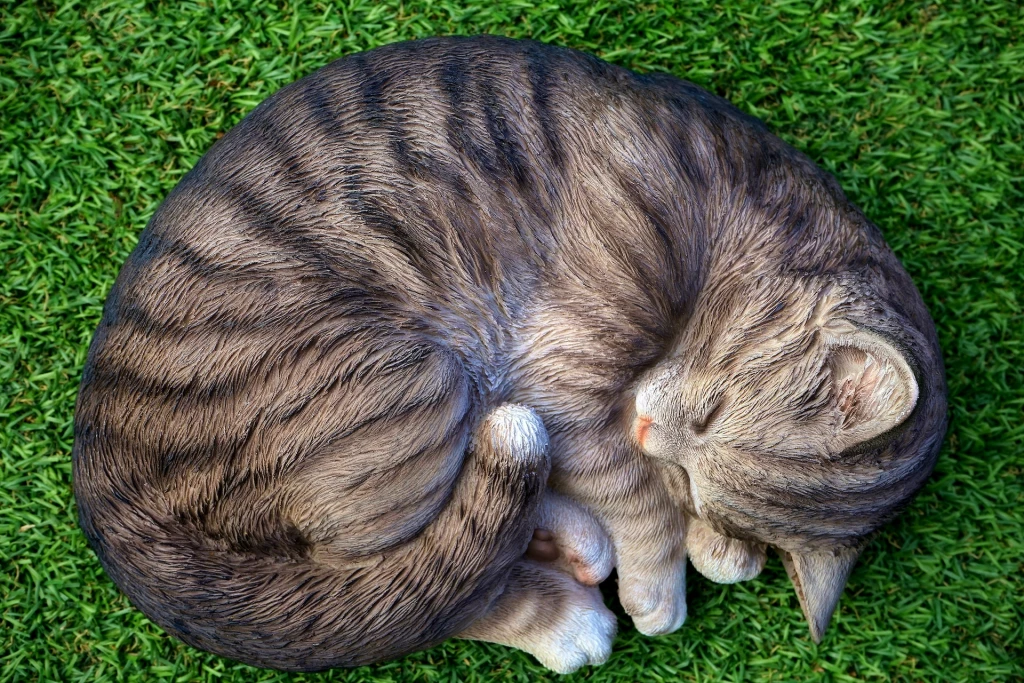Have you ever wondered why your cat likes to sniff other cats’ butts? Or maybe you have caught your cat doing this to you or your guests and felt embarrassed or confused. Well, you are not alone. Many cat owners and lovers have asked themselves the same question: why do cats smell each others butts?
The answer is not as simple or gross as you might think. In fact, cat butt sniffing is a fascinating and important form of cat communication that relies on their amazing sense of smell and their ability to detect chemical signals from the anal glands. These signals can tell a cat a lot about another cat, such as their sex, diet, health, mood, and availability for mating.
In this blog post, we will explore the reasons why cats smell each others butts and what it means for them and for us. We will also debunk some of the myths and misconceptions that people have about this behavior and share some fun facts and trivia that will make you appreciate your feline friend even more.
So, if you are curious about why cats sniff rear ends and want to learn more about their mysterious and marvelous world, keep reading and discover the secrets behind this quirky and cute habit.
Reasons Cats Smell Each Others Butts
Cats smell each others butts for various reasons, depending on the context and the relationship between the cats. Here are some possible reasons cats smell each others butts:
- Greeting. Cats smell each others butts as a way of saying hello and showing respect. It is similar to how humans shake hands or hug when they meet. Cats use their sense of smell to exchange information and establish relationships with each other.
- Bad smell. Cats smell each others butts as a way of detecting and removing any bad smell or dirt that may be stuck on their fur or skin. Cats are very clean animals and groom themselves regularly. They also help each other by licking or grooming each other’s butts.
- Familiar scent. Cats smell each others butts as a way of recognizing and confirming their identity and family. Cats have anal glands that produce a unique smell that identifies them as individuals. They also have a family scent that is created by rubbing, grooming, or petting each other.
- Sexual activities. Cats smell each others butts as a way of finding and attracting a mate. Cats have pheromones that signal their sex, health, mood, and reproductive status. They also have a special organ called the Jacobson’s organ that enhances their sense of smell and detects pheromones related to mating.
- Acceptance between them. Cats smell each others butts as a way of showing acceptance and trust between them. Cats that are familiar and friendly with each other may sniff each other’s butts as a way of greeting and showing affection. They may also lick or groom each other’s butts as a sign of trust and bonding.
- Social grooming as a means of bonding. Cats smell each others butts as a way of social grooming and bonding with each other. Cats that live together or see each other often may sniff each other’s butts as a way of updating and maintaining their social relationships. They may also use butt sniffing to see what’s new or different about their friends.
- Expressing submissiveness or dominance. Cats smell each others butts as a way of expressing submissiveness or dominance in their social hierarchy. Cats that are unfamiliar or neutral with each other may sniff each other’s butts as a way of getting to know each other and establishing their status. They may also use butt sniffing to avoid conflict or aggression by showing respect and submission.
- Marking territory with scent glands. Cats smell each others butts as a way of marking their territory with their scent glands. Cats have scent glands on different parts of their body, such as their chin, cheeks, ears, paws, and tail. They rub these glands on objects, people, or other cats to leave their scent and claim ownership. This also helps them create a familiar and comfortable environment.
What Can A Sniff Reveal?
Cats have a remarkable sense of smell that is 14 times more sensitive than ours. They use their noses to communicate with each other and to gather information about their surroundings. When cats sniff each other’s butts, they are actually detecting chemical signals in the oil from the anal glands. These signals can reveal a lot about the cat’s identity, such as their sex, diet, health, mood, and reproductive status.
Cats also have a special organ called the Jacobson’s organ that enhances their sense of smell. This organ is located inside the nose and mouth and can detect pheromones, which are odorless chemicals that affect behavior and emotions. Pheromones can help cats find mates, mark territory, and recognize each other.
Sniffing butts is a natural and instinctive way for cats to greet and get to know each other. It is similar to how humans shake hands or hug when they meet. Even cats that are familiar with each other will sniff butts to update their information and reinforce their bond. Sniffing butts can also help cats determine if the encounter is likely to be friendly or hostile.
So, the next time you see your cat sniffing another cat’s butt, don’t be grossed out. They are just saying hello and learning more about each other. It’s part of their feline language and culture.
How Do Cats Use Smell To Communicate?
Cats are not very vocal animals, but they have other ways of expressing themselves and understanding their environment. One of the most important ways is through their sense of smell. Cats have a very powerful and sophisticated sense of smell that allows them to communicate with each other and with other species.
Cats have two main systems for detecting smells: their nose and their vomeronasal organ. Their nose contains up to 200 million scent receptors, which is 40 times more than humans have. Their vomeronasal organ is a special organ located in the roof of their mouth that can detect pheromones, which are odorless chemicals that affect behavior and emotions.
Cats use smell to communicate in various ways, such as:
- Marking their territory. Cats have scent glands on different parts of their body, such as their chin, cheeks, ears, paws, and tail. They rub these glands on objects, people, or other cats to leave their scent and claim ownership. This also helps them create a familiar and comfortable environment.
- Greeting each other. Cats sniff each other’s faces, necks, and butts to exchange information and establish relationships. They can tell the sex, health, mood, and reproductive status of the other cat by smelling their pheromones.
- Finding a mate. Cats use pheromones to signal when they are in heat and ready to mate. Male cats can detect these pheromones from a distance and follow them to find a female cat.
- Avoiding conflict. Cats can smell if another cat is friendly or hostile by detecting their pheromones and body language. They can also use smell to avoid areas where other cats have marked or sprayed urine.
Smell is a vital part of a cat’s life and communication. It helps them navigate their world and interact with others. As cat owners, we should respect their sense of smell and avoid using strong perfumes, cleaners, or air fresheners that might irritate or confuse them. We should also provide them with enough space and resources to mark their territory and feel secure.
Why Do Cats Sniff Butts Even if They Know Each Other Well?
You might think that cats only sniff butts when they meet a new cat, but that’s not the case. Cats also sniff butts of cats they already know, even if they live together or see each other often. Why do they do that?
The answer is that cats use smell as a way of updating and maintaining their social relationships. Cats have scent glands in their butts that produce a unique smell that identifies them as individuals. By sniffing another cat’s butt, they can learn a lot of information about them, such as their sex, health, mood, diet, and reproductive status.
Cats also use butt sniffing as a way of greeting and showing respect to each other. It’s like saying “Hello, how are you?” or shaking hands in human terms. Sniffing butts can also help cats reinforce their bond and communication with each other.
Butt sniffing is not only informative but also fun and interesting for cats. They enjoy exploring different smells and finding out what’s new or different about their friends. It’s also a social activity that shows off their confidence and curiosity to other cats.
So, don’t be alarmed or disgusted if you see your cat sniffing another cat’s butt, even if they know each other well. They are just being friendly and sociable, and keeping up with their feline news.
How Do Cats React to Butt Sniffing?
Butt sniffing is a common and normal behavior for cats, but how do they feel about it? Do they enjoy it or hate it? Do they get offended or flattered? The answer is: it depends.
Cats have different personalities and preferences, so their reactions to butt sniffing may vary. Some cats may be more tolerant and friendly than others, and some may be more shy and reserved. Some cats may be more curious and adventurous than others, and some may be more cautious and fearful.
Generally speaking, cats will react to butt sniffing based on their mood, their relationship with the other cat, and their level of comfort and security. Here are some possible scenarios and reactions:
- If two cats are familiar and friendly with each other, they may sniff each other’s butts as a way of greeting and showing affection. They may also lick or groom each other’s butts as a sign of trust and bonding. They may purr, rub, or nuzzle each other after the sniffing session.
- If two cats are unfamiliar or neutral with each other, they may sniff each other’s butts as a way of getting to know each other and establishing their status. They may also use butt sniffing to avoid conflict or aggression by showing respect and submission. They may keep a polite distance or move away after the sniffing session.
- If two cats are unfriendly or hostile with each other, they may avoid or resist butt sniffing as a way of showing dominance or defiance. They may also use butt sniffing to provoke or challenge each other by showing disrespect or aggression. They may hiss, growl, or attack each other after the sniffing session.
As cat owners, we should respect our cats’ reactions to butt sniffing and not interfere unless there is a risk of injury or stress. We should also provide our cats with enough space and resources to feel comfortable and secure in their environment. We should also understand that butt sniffing is not a sign of bad manners or hygiene, but a natural and instinctive way for cats to communicate.
What Are Some Common Myths or Misconceptions About Cat Butt Sniffing?
Cat butt sniffing is a natural and normal behavior for cats, but it is often misunderstood or misinterpreted by humans. Here are some common myths or misconceptions about cat butt sniffing and the truth behind them:
- Myth: Cat butt sniffing is rude or disgusting. Truth: Cat butt sniffing is not rude or disgusting to cats. It is a polite and respectful way of greeting and communicating with each other. It is similar to how humans shake hands or hug when they meet. Cats use their sense of smell to exchange information and establish relationships with each other.
- Myth: Cat butt sniffing is a sign of bad hygiene or infection. Truth: Cat butt sniffing is not a sign of bad hygiene or infection. Cats are very clean animals and groom themselves regularly. They also have anal glands that produce a unique smell that identifies them as individuals. Cat butt sniffing is not a way of detecting or spreading diseases, but a way of learning and sharing information about each other.
- Myth: Cat butt sniffing is only for mating purposes. Truth: Cat butt sniffing is not only for mating purposes. Cats use butt sniffing for various reasons, such as greeting, bonding, avoiding conflict, marking territory, and finding mates. Cats can tell the sex, health, mood, diet, and reproductive status of another cat by smelling their pheromones12. They also have a special organ called the Jacobson’s organ that enhances their sense of smell and detects pheromones related to mating.
- Myth: Cat butt sniffing is only for unfamiliar cats. Truth: Cat butt sniffing is not only for unfamiliar cats. Cats also sniff butts of cats they already know, even if they live together or see each other often. Cats use butt sniffing to update and maintain their social relationships. They also use butt sniffing to see what’s new or different about their friends. It’s a social and interesting activity for cats.
What Are Some Fun Facts or Trivia About Cat Butt Sniffing?
Cat butt sniffing may seem weird or gross to us humans, but it is actually a fascinating and important part of feline behavior. Here are some fun facts or trivia about cat butt sniffing that you may not know:
- Cat butt sniffing is similar to a human handshake or a kiss on the cheek. It is a polite and respectful way of greeting and communicating with each other. Cats use their sense of smell to exchange information and establish relationships with each other.
- Cat butt sniffing can reveal a lot of information about the other cat, such as their sex, health, mood, diet, and reproductive status. Cats have anal glands that produce a unique smell that identifies them as individuals. They also have pheromones that affect behavior and emotions.
- Cat butt sniffing can also help cats avoid conflict or aggression by showing respect and submission. Cats can tell if another cat is friendly or hostile by detecting their pheromones and body language. They can also use butt sniffing to mark their territory or find a mate.
- Cat butt sniffing is not only for unfamiliar cats. Cats also sniff butts of cats they already know, even if they live together or see each other often. Cats use butt sniffing to update and maintain their social relationships. They also use butt sniffing to see what’s new or different about their friends. It’s a social and interesting activity for cats.
- Cats have a special organ called the Jacobson’s organ that enhances their sense of smell and detects pheromones related to mating. This organ is located in the roof of their mouth and opens into the nose. When cats curl their lips and appear to smile, they are opening up their Jacobson’s organ and pushing air into it. This is called the Flehmen response.
- Cats have 40 times more smell-sensing cells in their nasal passages than humans do. They have up to 200 million scent receptors in their nose, while humans have only 5 million. Cats also have 14 times more sensitive sense of smell than humans do.
- Cats have butt cheeks. Yes, you read that right. Cats have two small muscles on each side of their anus that form their butt cheeks. These muscles help them control their anal glands and sphincter.
Conclusion
Cat butt sniffing may seem weird or gross to us humans, but it is actually a fascinating and important part of feline behavior. Cats use their sense of smell to communicate with each other and to gather information about their surroundings. Cat butt sniffing is a way of greeting, bonding, finding mates, avoiding conflict, marking territory, and more. It is a natural and instinctive way for cats to express themselves and interact with others.
As cat owners, we should respect and appreciate their sense of smell and their communication techniques. We should also provide them with enough space and resources to feel comfortable and secure in their environment. Cat butt sniffing is not a sign of bad manners or hygiene, but a sign of curiosity and friendship. It is part of their feline language and culture.
